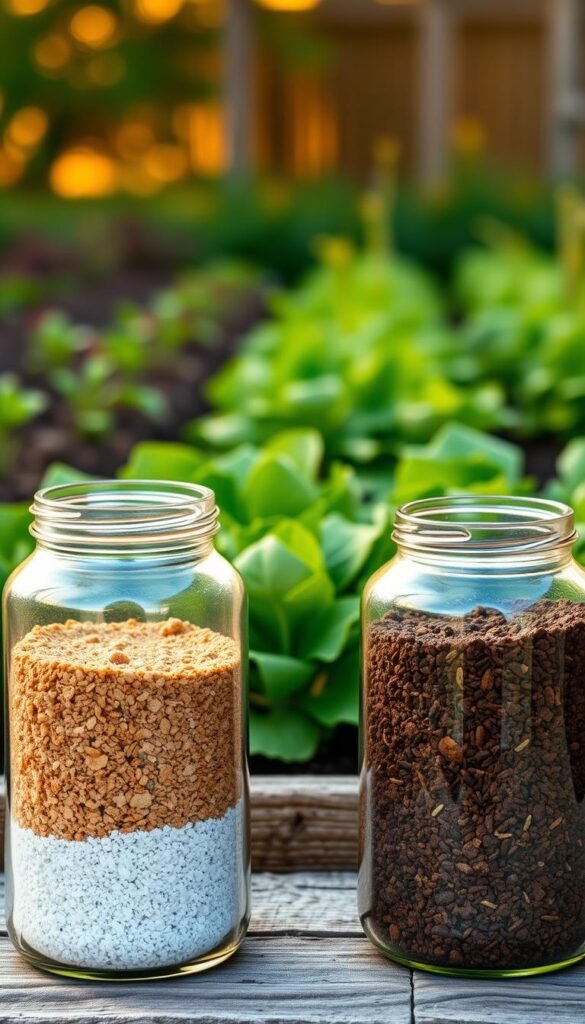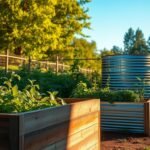Growing healthy, vibrant veggies starts with understanding what feeds your soil. Whether you’re new to gardening or refining your techniques, choosing the right nutrients can feel overwhelming. Soil health isn’t just about today’s harvest—it’s about creating a thriving ecosystem for years to come.
Many growers face a common dilemma: quick-acting solutions versus slow-release options. Ready-to-use products deliver fast results, while natural alternatives work gradually through microbial activity. Your goals—whether boosting yields immediately or nurturing long-term fertility—will steer this decision.
Cost, environmental impact, and ease of use also play roles. Some options fit tight budgets better, while others prioritize sustainability. Local soil conditions matter too—what works in one plot might fail in another. Every garden tells its own story, and your strategy should adapt to its unique needs.
This guide breaks down the pros, cons, and hidden factors behind each method. You’ll learn how to balance short-term gains with lasting soil vitality. Let’s dig into what makes your garden thrive!
Understanding Fertilizer Basics and Soil Health
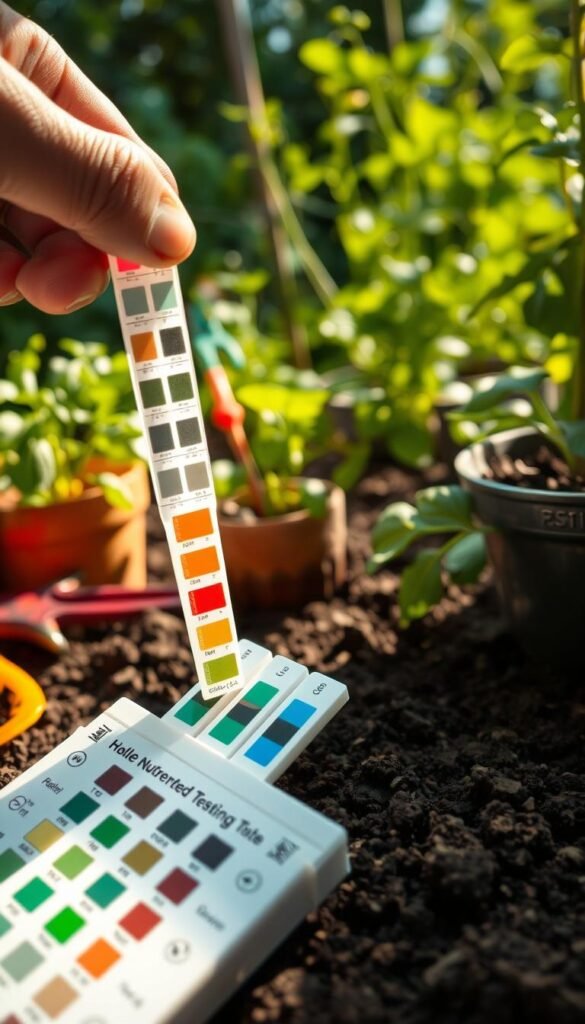
Healthy crops begin with balanced earth. Your garden’s success depends on three big players: macronutrients, trace elements, and proper pH levels. Let’s explore how these factors work together to create ideal growing conditions.
What Plants Crave: The Big Three
Nitrogen fuels leafy growth, phosphorus strengthens roots, and potassium boosts disease resistance. These primary nutrients work like a team—skip one, and your harvest suffers. Here’s a quick guide to their roles:
| Nutrient Type | Key Elements | Primary Functions |
|---|---|---|
| Macronutrients | N-P-K | Leaf development, root growth, stress resistance |
| Micronutrients | Iron, Zinc, Manganese | Enzyme production, chlorophyll synthesis |
Sandy ground loses nutrients faster than clay. If your plot feels gritty, you’ll need more frequent feedings. Pro tip: Mix in compost to improve water retention.
Testing and Balancing Act
Grab samples from 8-10 spots at shovel depth. Mix them in a clean bucket—about a cup’s worth gets sent for analysis. Labs measure acidity and nutrient levels, giving you a custom game plan.
Most veggies thrive at pH 6.2-6.8. Too acidic? Add lime. Too alkaline? Sulfur helps. These changes take months, so test early! For a 1,000 sq. ft. plot, aim for 3 pounds of nitrogen yearly—split between growing seasons.
- Yellow leaves? Could mean low nitrogen
- Purple stems? Phosphorus shortage
- Brown edges? Potassium deficit
Armed with test results, you’ll know exactly what your ground needs—no guesswork required!
Fertilizer for Vegetable Garden: Organic vs. Synthetic Approaches
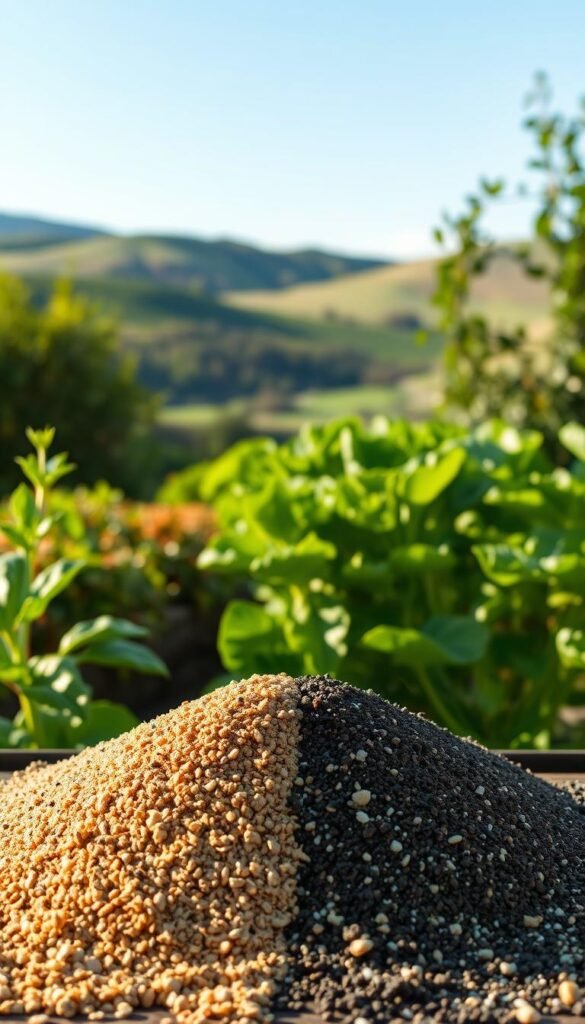
Your garden’s nutrient strategy impacts more than just this season’s tomatoes. While some options shine for instant results, others build resilience through natural processes. Let’s compare how different amendments perform in real-world growing conditions.
Advantages and Limitations of Synthetic Options
Pre-mixed formulas like 10-10-10 deliver nutrients fast—perfect for rescuing struggling plants. You’ll see greener leaves within days since these synthetic fertilizers skip microbial processing. Budget-friendly pricing ($25-$30 per 50lb bag) makes them popular for large plots.
But speed has trade-offs. Heavy rains wash away up to 50% of nitrogen before roots absorb it. Over time, salt buildup can harden earth, reducing water infiltration. “They’re like energy drinks for plants—great short-term, but not sustainable,” notes a Midwest nursery owner.
Organic Fertilizer Benefits for Long-Term Growth
Natural amendments work smarter, not harder. Blood meal (12.5% nitrogen) and bone meal (24% phosphorus) feed soil life while nourishing plants. Though pricier upfront, they improve tilth and moisture retention season after season.
- Compost enriches earth with humus
- Earthworms thrive in organically-fed soils
- Microbes release nutrients gradually
This organic vs synthetic fertilizers comparison shows how natural options support biodiversity. You’ll wait weeks for results, but your ground becomes more productive yearly.
Implementing Fertilizer Strategies in Your Garden
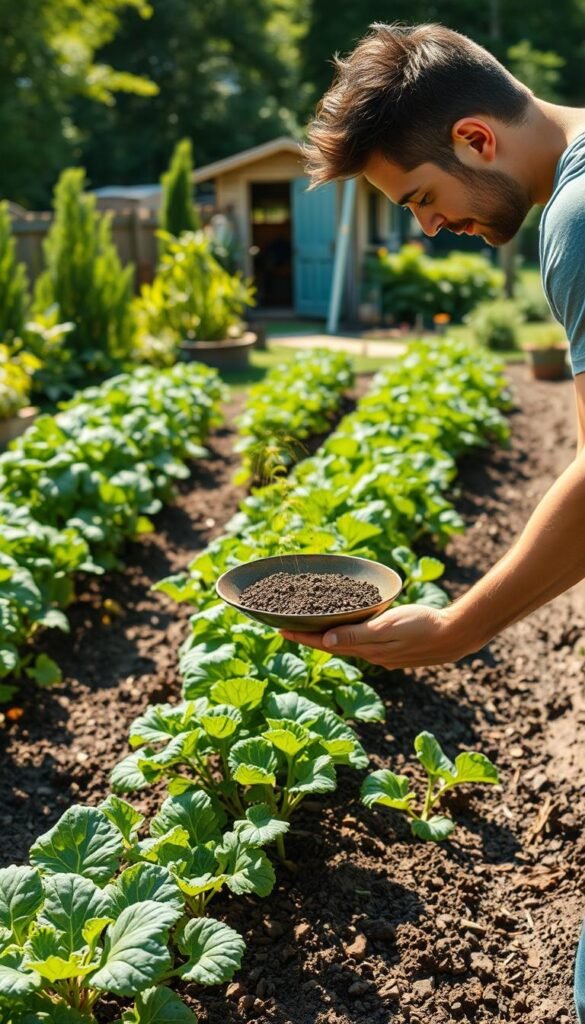
A well-fed garden thrives when you apply nutrients thoughtfully. Let’s explore how to deliver nourishment effectively while building resilient growing spaces.
Proper Application Techniques and Timing
Start with 30 pounds of 13-13-13 blend per 1,000 sq. ft. during planting. For established plots, switch to 12-4-8 formulas to reduce phosphorus buildup. Heavy feeders like corn demand extra care—side-dress with 5 pounds of 34-0-0 when stalks hit 12 inches tall, then repeat at 3 feet.
Hold off during flowering phases. Tomatoes and peppers need food only after fruits reach dime size. Golden rule: Water granules within 24 hours to prevent root burn. Never sprinkle dry pellets on wet leaves or stems.
Transitioning Gradually to Organic Practices
Begin with blood meal (12% nitrogen) or bone meal (20% phosphorus) at planting time. Keep synthetic options as emergency backups for struggling plants. Over 2-3 seasons, increase compost tea applications while reducing chemical blends.
Try liquid fish emulsion through drip lines every 3 weeks. This method feeds roots evenly without shocking plants. “Mix 1 cup worm castings per gallon for seedlings,” suggests a Texas gardening coach. Your soil’s microbial life will thank you!
Economic Considerations and Long-Term Soil Health
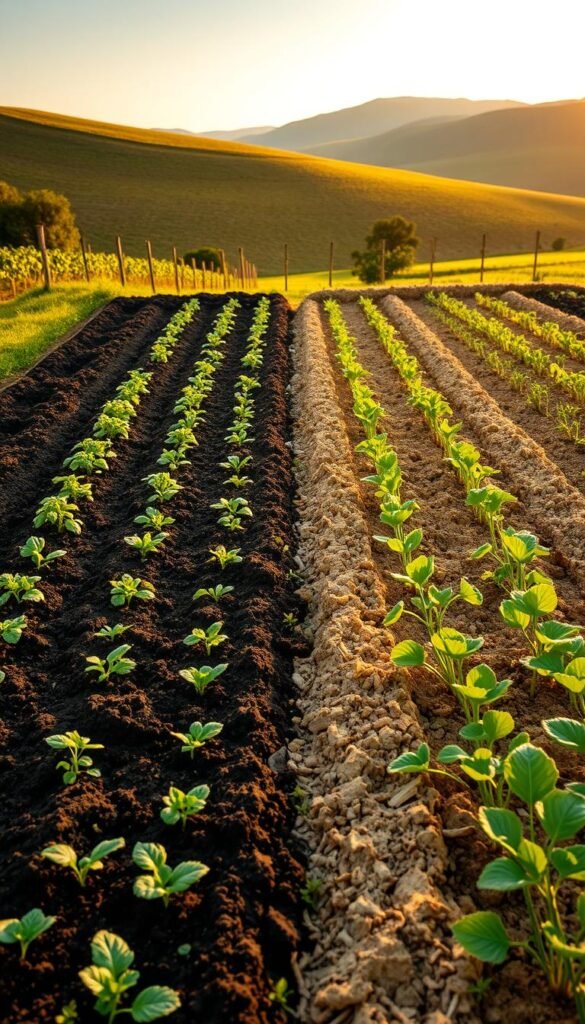
Smart gardening decisions balance upfront costs with future rewards. While a bag of synthetic fertilizers might cost half as much as organic options, their true price emerges over time. Chemical blends require reapplying every 6-8 weeks, while natural amendments feed plants gradually through microbial activity.
Here’s the hidden math: organic fertilizers like compost and manures improve water retention by 15-20%, reducing irrigation needs. They also add micronutrients that synthetic mixes skip. A three-year study showed gardens using natural materials needed 40% less product by the third season.
| Factor | Organic | Synthetic |
|---|---|---|
| Cost per season | $120 | $75 |
| Applications needed | 2 | 4 |
| Soil improvement | Yes | No |
Legume cover crops slash expenses dramatically. Planting clover between growing seasons adds nitrogen naturally—enough to cut fertilizer needs by 30%. “It’s like getting free plant food while your soil rests,” shares a California grower.
Transitioning to organics pays dividends beyond dollars. Healthier earth resists pests better, saving on treatments. Test your ground annually—balanced soils often need fewer inputs year after year. Your wallet and ecosystem will both thrive!
Final Thoughts on Optimizing Your Vegetable Garden
Your journey to a thriving plot begins with observation and adaptation. Whether you lean toward natural amendments or quick-acting solutions, success lies in matching your approach to your soil’s unique needs. Soil tests remain your best guide—they reveal exactly what your plants crave without wasting resources.
Many gardeners blend methods effectively. Start with nutrient-rich organic gardening basics like compost during planting, then use targeted synthetic boosts for struggling crops. Track results in a journal—note which combinations yield the juiciest tomatoes or sturdiest corn stalks.
Remember: healthy earth improves yearly when fed properly. Compost adds organic matter that holds moisture, while drip systems cut water use by half. Your strategy might shift as you learn—that’s growth, not failure!
Stay curious. Try new materials like bone meal for phosphorus or fish emulsion for nitrogen. Each season brings fresh insights, helping you refine practices for tastier harvests and richer soil. Your garden’s story is always evolving—keep writing it with care!
